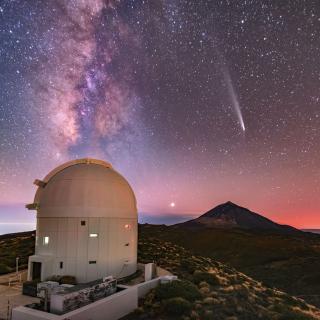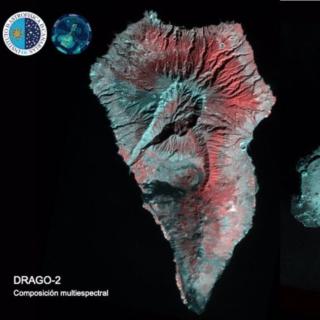It may interest you
-
 The Instituto de Astrofísica de Canarias (IAC) has opened the application period for the XXXVI Canary Islands Winter School of Astrophysics , which will be held from 17 to 22 November 2025. This edition is carried out in the framework of the CELESTE (Centre for Optical and Space Technologies of the IAC) programme funded by the European Union and will focus on key optical technologies for astronomy, a field that is driving 21st century discoveries about the universe. Applications will be accepted until Friday, 13 June. The IAC’s Winter School is renowned for its educational approach andAdvertised on
The Instituto de Astrofísica de Canarias (IAC) has opened the application period for the XXXVI Canary Islands Winter School of Astrophysics , which will be held from 17 to 22 November 2025. This edition is carried out in the framework of the CELESTE (Centre for Optical and Space Technologies of the IAC) programme funded by the European Union and will focus on key optical technologies for astronomy, a field that is driving 21st century discoveries about the universe. Applications will be accepted until Friday, 13 June. The IAC’s Winter School is renowned for its educational approach andAdvertised on -
 En 2025, el Instituto de Astrofísica de Canarias (IAC) celebra el cuarenta aniversario de su inauguración oficial en 1985, consolidándose como uno de los principales centros de investigación de Astrofísica a nivel internacional.Advertised on
En 2025, el Instituto de Astrofísica de Canarias (IAC) celebra el cuarenta aniversario de su inauguración oficial en 1985, consolidándose como uno de los principales centros de investigación de Astrofísica a nivel internacional.Advertised on -
 The Instituto de Astrofísica de Canarias (IAC) has started its development of DRAGO-3 , the third generation of its instrument: Demonstrator for Remote Analysis of Ground Observations (DRAGO), designed for Earth observation from space in the short wave infrared region of the spectrum (SWIR). This new instrument comes after the success of DRAGO-1 and DRAGO-2 , which have proved their utility in key applications such as following volcanic eruptions, hydrological monitoring of regions affected by climate change, and the control of forest fires. Both the previous models have shown theirAdvertised on
The Instituto de Astrofísica de Canarias (IAC) has started its development of DRAGO-3 , the third generation of its instrument: Demonstrator for Remote Analysis of Ground Observations (DRAGO), designed for Earth observation from space in the short wave infrared region of the spectrum (SWIR). This new instrument comes after the success of DRAGO-1 and DRAGO-2 , which have proved their utility in key applications such as following volcanic eruptions, hydrological monitoring of regions affected by climate change, and the control of forest fires. Both the previous models have shown theirAdvertised on
